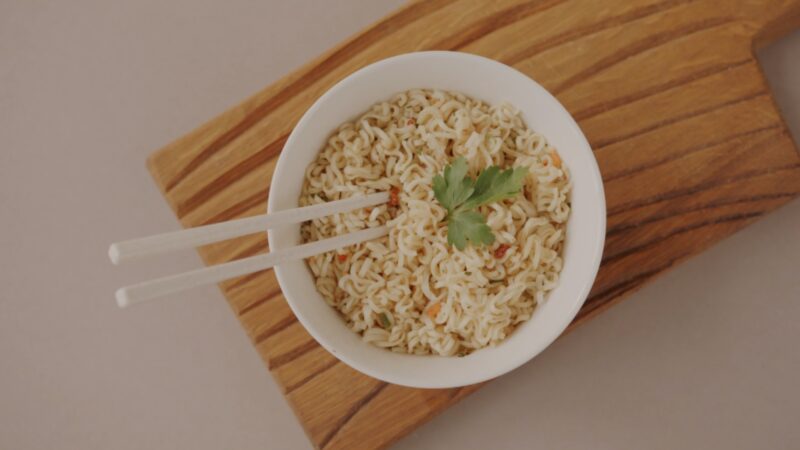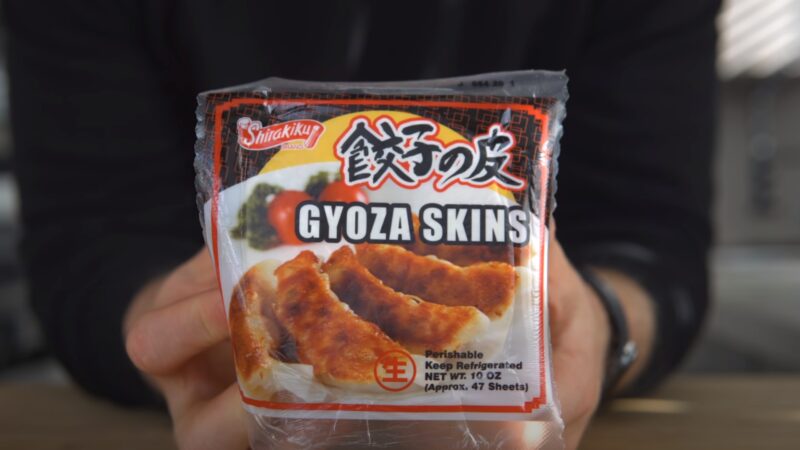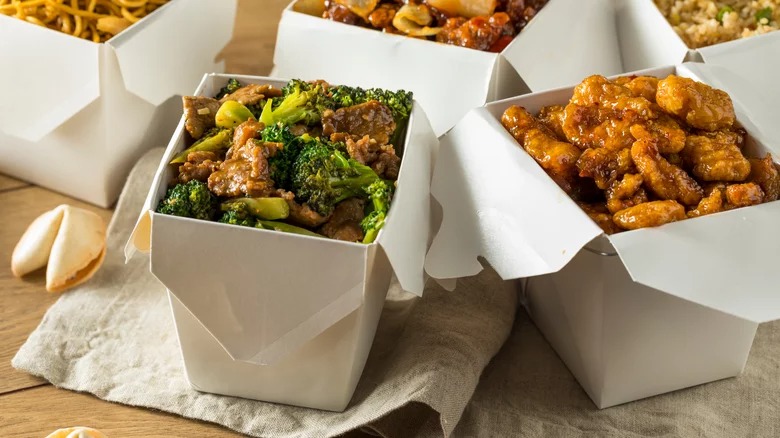Chinese food is one of the most popular cuisines in the world, with a rich history and a diverse range of dishes. Whether you order takeout, cook at home, or dine in a restaurant, you may wonder how long you can safely enjoy your leftovers or store your ingredients.
In this blog post, we will answer some common questions about the shelf life, storage, and reheating of Chinese food, as well as share some tips on how to prevent food poisoning and waste. We will mainly focus on traditional Chinese food, without including new dishes that have modern elements like dairy.
How Long Can It Last?

According to the USDA, cooked food should be refrigerated within two hours of serving to prevent the growth of harmful bacteria. The temperature of your fridge should be below 40°F (4°C) to keep your food fresh and safe.
In general, Chinese food can last for about three to four days in the fridge, like any other type of leftover. However, some dishes may have a shorter or longer shelf life depending on the ingredients, cooking methods, and sauces.
For example, rice and noodles can last longer than seafood and meat, and fried food can last longer than steamed or boiled food. Here is a table that shows the approximate shelf life of some common Chinese dishes in the fridge.
| Dish | Shelf life |
|---|---|
| Fried rice | 4 to 6 days |
| Lo mein | 3 to 5 days |
| Chow mein | 3 to 5 days |
| Dumplings | 3 to 4 days |
| Spring rolls | 2 to 3 days |
| Egg rolls | 2 to 3 days |
| Sweet and sour pork | 3 to 4 days |
| Kung pao chicken | 3 to 4 days |
| General Tso’s chicken | 3 to 4 days |
| Beef and broccoli | 3 to 4 days |
| Mapo tofu | 2 to 3 days |
| Hot and sour soup | 3 to 4 days |
| Wonton soup | 1 to 2 days |
| Shrimp and vegetables | 1 to 2 days |
Remember that these are only estimates and that the actual shelf life of your food may vary depending on how it was prepared, stored, and handled. If you notice any signs of spoilage, such as mold, bad smell, slimy texture, or change in color, discard the food immediately.
When in doubt, throw it out.
How Long Does It Keep in The Freezer?

If you want to extend the shelf life of your Chinese food, you can freeze it for up to three months. Freezing can slow down the deterioration of food and prevent bacterial growth, but it may also affect the taste, texture, and quality of some dishes.
Before freezing, make sure to cool your food completely and transfer it to airtight containers or freezer bags. Label and date your food so you can keep track of how long it has been frozen.
Avoid overfilling your containers or bags, as food expands when frozen. Leave some space for air circulation and prevent freezer burn.
Some dishes freeze better than others. For example, rice, noodles, dumplings, meat, and vegetables can retain their flavor and texture well after freezing and thawing.
Nevertheless, fried food, soups, and sauces tend to lose their crispiness, and consistency, and become separated when stored in the freezer. The following table provides an estimate of the shelf life for various popular Chinese dishes when frozen.
| Dish | Shelf life |
|---|---|
| Fried rice | 2 to 3 months |
| Lo mein | 2 to 3 months |
| Chow mein | 2 to 3 months |
| Dumplings | 2 to 3 months |
| Spring rolls | 1 to 2 months |
| Egg rolls | 1 to 2 months |
| Sweet and sour pork | 2 to 3 months |
| Kung pao chicken | 2 to 3 months |
| General Tso’s chicken | 2 to 3 months |
| Beef and broccoli | 2 to 3 months |
| Mapo tofu | 1 to 2 months |
| Hot and sour soup | 1 to 2 months |
| Wonton soup | 1 to 2 months |
| Shrimp and vegetables | 1 to 2 months |
Please note that these estimates are rough and the actual longevity of your food may differ based on its preparation, storage, and handling. Should you observe any indications of freezer burn like ice crystals, dry spots, or discoloration, consuming the food is still possible albeit with a potential decrease in quality.
However, if you detect any signs of spoilage such as mold, unpleasant odor, or alteration in color, it is imperative to dispose of the food right away.
How to Reheat Safely and Properly?
Reheating Chinese food can be tricky, as different dishes may require different methods and temperatures. The goal is to heat the food evenly and thoroughly, without overcooking or drying it out.
The best way to reheat Chinese food is to use the same method that was used to cook it. For example, if the food is fried, you can reheat it in a skillet or a wok over medium-high heat, stirring frequently and adding some oil or water if needed.
If the food is steamed or boiled, you can reheat it in a pot of boiling water, a steamer, or a microwave, covering the food with a lid or a damp paper towel to retain moisture. The microwave is a convenient and quick way to reheat Chinese food, but it may not be the best option for some dishes, especially fried food, as it can make them soggy or rubbery
To ensure safe microwave usage, it’s important to utilize microwave-safe containers and stir the food during heating. To avoid dryness, consider sprinkling water or adding sauce to the food.
No matter what method you use, always check the temperature of your food before eating. The USDA recommends reheating cooked food to an internal temperature of 165°F (74°C) to kill any harmful bacteria.
You can use a food thermometer to measure the temperature or use your senses to judge if the food is hot enough. Do not reheat the same food more than once, as this can increase the risk of food poisoning.
How to prevent food poisoning and waste from Chinese food?
Food poisoning is a serious illness that can be caused by eating food that is contaminated with bacteria, viruses, parasites, or toxins. Symptoms of food poisoning may include nausea, vomiting, diarrhea, abdominal cramps, fever, and dehydration.
In some cases, food poisoning can lead to severe complications, such as kidney failure, nerve damage, or death. Food waste is a global problem that affects the environment, the economy, and society.
According to the Food and Agriculture Organization of the United Nations, about one-third of the food produced for human consumption is lost or wasted every year, which amounts to about 1.3 billion tons of food. This food waste contributes to greenhouse gas emissions, water pollution, land degradation, and biodiversity loss.
It also represents a waste of resources, money, and opportunities to feed the hungry. To prevent food poisoning and waste from Chinese food, you can follow these simple tips.
- Order or cook only the amount of food that you can eat or store safely. Avoid over-ordering or over-cooking, as this can lead to leftovers that may spoil or go to waste.
- Store your food properly and promptly. Refrigerate or freeze your food within two hours of serving, and use airtight containers or bags to prevent cross-contamination and spoilage.
- Label and date your food so you can keep track of how long it has been stored. Use the first-in, first-out rule to consume the oldest food first.
- Reheat your food safely and properly. Use the appropriate method and temperature to heat your food evenly and thoroughly, and check the temperature before eating. Do not reheat the same food more than once.
- Discard any food that shows signs of spoilage, such as mold, bad smell, slimy texture, or change in color. When in doubt, throw it out.
- Donate any excess food that is still safe and edible to a food bank, a soup kitchen, or a charity. You can also share your food with your friends, family, or neighbors.
- Compost any food scraps that are not suitable for human or animal consumption, such as peels, cores, pits, or bones. You can use the compost to fertilize your plants or garden.
FAQ
Can I store different Chinese dishes together in the same container?
It’s generally not recommended to store different dishes in the same container. Different ingredients may have varying shelf lives, and flavors can mix, potentially altering the taste and quality of the dishes. Separate storage in airtight containers is advisable to maintain freshness and prevent cross-contamination.
Is it safe to eat this type of food cold, directly from the fridge?
While some Chinese dishes can be safely eaten cold, such as certain noodle salads, it’s generally safer to reheat dishes, especially those containing meat, seafood, or rice, to avoid the risk of foodborne illnesses. Always ensure the food reaches an internal temperature of 165°F (74°C) when reheated.
How can I tell if frozen Chinese food has gone bad?
Signs of spoilage in frozen Chinese food include ice crystals, a freezer burn appearance (dry spots or discoloration), and an off smell once thawed. If the food shows any of these signs or if you’re unsure about its quality, it’s safer to discard it.
Are there any dishes that should not be frozen?
Dishes with high water content, like some soups or sauces, may not freeze well as they can become watery or separated upon thawing. Dishes with crispy textures, like spring rolls or fried items, might also lose their crispiness when frozen and reheated.
How can I revive the crispiness of fried food when reheating?
To revive the crispiness of fried Chinese dishes, reheat them in an oven or toaster oven at a moderate temperature until they’re heated through. Avoid using the microwave for reheating crispy foods, as it can make them soggy.
What’s the best way to thaw frozen food?
The safest way to thaw frozen Chinese food is in the refrigerator. This method ensures that the food thaws at a safe, consistent temperature, reducing the risk of bacterial growth. Avoid thawing food at room temperature on the counter, as this can encourage bacteria to multiply.
Final Words
Chinese food is a delicious and diverse cuisine that can be enjoyed for a long time if stored and reheated properly. By following the guidelines and tips in this blog post, you can prevent food poisoning and waste, and savor the flavor and quality of your Chinese food.
Bon appétit!
